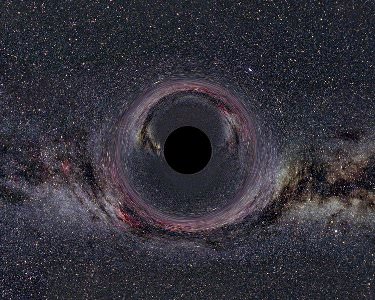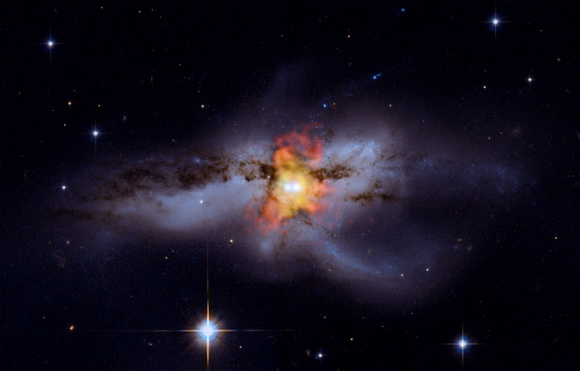Black Hole

A black hole is an astronomy theoretical celestial object, formed when a massive star collapses from its own gravity. A black hole has such a strong pull of gravity that not even light can escape from it.
Some scientists theorize that rotating black holes (also know as Kerr black holes) which contain billions of dead stars lie at the centers of galaxies.
The idea of black holes was first theorized in the late eighteenth century by English geologist John Mitchell and French astronomer Pierre Simon Laplace. At one time, scientists called them "gravitationally collapsed objects." Russian scientists suggested calling them "collapsars," but it wasn't until 1969 when Princeton physicist, John Wheeler coined the term black hole. Black holes have continued to hold public interest and are a popular fixture of science fiction books and movies.

 |
Black holes: Powerhouses of the universe 7-11-2009 Black holes, so named because even light cannot escape their gravitational grasp, can only be sensed through their tug on other matter. While black holes themselves are invisible, the regions around them are reigned by powerful magnetic and gravitational forces that create some of the most luminous radiation ever seen. |
 |
If You Don't Have an LHC, Here's How to Create Your Own Black Hole 28-10-2009 Those fearful folks who have worried about the Large Hadron Collider creating a black hole that could swallow the Earth have probably been feeling pretty safe while the giant particle accelerator is still offline. But hopefully they haven't read the latest Physical Review Letters. |
 |
Two Black Holes Play a Little One on One 28-10-2009 If black holes could communicate, there would likely be a lotta in your face trash talkin' going on between these two merging black holes. This image of NGC 6240 contains new X-ray data from Chandra (shown in red, orange, and yellow) that has been combined with an optical image from the Hubble Space Telescope originally released in 2008. |












